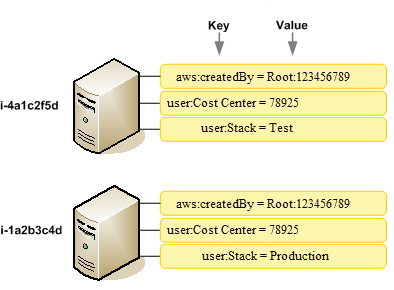This blog is a follow-up to our previous post, Reduce Spend and Drive Efficiency Through Cloud Optimisation.
With the background of blog one in mind, let’s look at some critical approaches to gaining control of your cloud environment and learn some concrete cloud cost reduction steps your business can take now…
The fundamental techniques for basic cloud hygiene.
Setting up landing zones


In the past, when companies embarked on a cloud journey, they had to manage all aspects of their cloud environment themselves, including organising various accounts, providing access control for teams and systems, and creating guardrails. This process was time-consuming, expensive, and required a dedicated team to maintain it.
However, as cloud platforms have matured and best practices have emerged, cloud providers have started to offer pre-built solutions to help customers quickly set up a secure account structure and workload environment based on industry best practices. These solutions are called landing zones.
A landing zone is a pre-configured environment that provides a foundation and centralised, macro-level view of cloud deployment for managing accounts, workloads, and security in the cloud.
Setting up a landing zone involves creating accounts, identity and access management policies, and network configurations that follow a standardised framework. This framework is based on best practices and can be customised to fit specific business needs.
A service known as AWS Control Tower can help automate this process with blueprints for identity, federated access and account structure. This simplifies things by orchestrating multiple AWS services on your behalf while maintaining the security and compliance needs of your organisation.
However, creating a homegrown version of a landing zone can be expensive and time-consuming. It requires a team of people to design, implement, and maintain the environment and may not be transportable. Customers can avoid these costs with a pre-built landing zone and start their cloud journey quickly.
A landing zone allows customers to launch new projects and scale up or down their infrastructure as needed, all while maintaining security and governance. It is a powerful tool for gaining control of your cloud environment.
Tagging resources


What is tagging?
Tagging is attaching metadata to cloud resources, such as virtual machines, storage buckets, and databases. It allows you to label and categorise resources to organise them and make them easier to manage.
There are many use cases for tagging, and the most common ones include:
- Cost management: With tagging, you can get granular visibility into your cloud costs by categorising resources according to their function, owner, or application. Control allows you to track and allocate costs more effectively, identify areas where you can optimise your spending, and avoid surprises in your monthly bill.
- Automation: Tags can automate everyday activities such as backup, scaling, and monitoring. You can create policies that apply to resources with a specific tag, which saves time and reduces errors.
- Security, governance, and compliance: Tags can apply security policies, compliance requirements, and access controls to resources. You can ensure that sensitive data is appropriately secured and resources are only accessible to authorised users.
- Resource management: Tags can identify the purpose and owner of resources, which helps you manage them more efficiently. You can easily find and manage resources by searching for them based on their tags and ensuring allocation to their intended purpose.
The challenges of tagging:
While tagging is a powerful tool, there are some challenges to consider:
- It can get complex quickly: With many resources and tags to manage, it can be challenging to keep track of everything. Having a clear tagging strategy and enforcing it consistently across your organisation is essential.
- It can be hard to apply after the fact: Tagging all your existing resources can be difficult and time-consuming if you have not used tags from the beginning.
- It requires ongoing maintenance: Tags must be regularly updated to reflect environmental changes.
Watch the full webinar content on landing zones and tagging resources here.
Essential cloud cost-saving techniques
Having utilised these fundamental cloud hygiene practices, you can now apply these four essential cloud cost-saving practices more efficiently:
1. Shutdown environments when not in use:
This technique involves shutting down non-production accounts and resources, such as weekends and nights when they are not needed.
This technique can help reduce cloud bills significantly. To implement this technique, resources not needed during specific periods should be eligible for shutdown, and the pause can be done using schedules or on-demand shutdowns. One example of this technique is using a bot to remind teams to start and shut down test environments each day using tools like Slack or PsyOps.
However, this technique requires careful consideration of the impact on development teams and maintaining the use of the right resources and architecture.
2. Using Spot Instances:
Cloud providers offer unused servers at a fraction of their listed price called “Spot Instances”.
These instances can be up to 80-90% cheaper than the market rate but are temporary in nature and can shut down at short notice. Spot Instances are best suited for non-critical workloads like development environments, batch processing, reporting, and offline workloads. To use Spot Instances, users need to be prepared for sudden shutdowns and implement fault-tolerant architectures that can handle such events.
3. Terminating untagged resources:
This technique involves identifying and terminating untagged resources that are no longer needed.
Untagged resources can accumulate over time, leading to unnecessary costs. Organisations can use tools like AWS Config to identify and tag resources to implement this technique, ensuring that only the necessary resources are retained.
4. Automating with Infrastructure as Code (IAC):
This technique involves using IAC tools like CloudFormation or Terraform to manage cloud resources.
IAC allows for consistent and repeatable deployments, which can lead to cost savings by reducing errors and improving resource utilisation. Additionally, IAC allows for better tracking of resources, making it easier to identify unused resources for termination.
Watch the full webinar content on cloud cost-saving techniques here.
To drive operational efficiency through the cloud, your organisation should develop a robust cloud architecture based on best practices and principles, investigate the total cost of cloud ownership, and implement fundamental hygiene practices and cost-saving techniques.
Implementing the above techniques will help you to reduce cloud bills and retain only necessary resources.
Want to know more?
You can book an assessment with our consultants where we will assess your cloud environment and provide an optimum pathway to cloud optimisation, which will help you to:
- Deliver essential cost savings now and boost operational agility well into the future
- Reduce complexity, streamline and automate processes for continuous optimisation.
- Gain control of their current cloud accounts for future deployments.
- Understand what services they are using and how they are using them.
Contact us to book or find out more.

